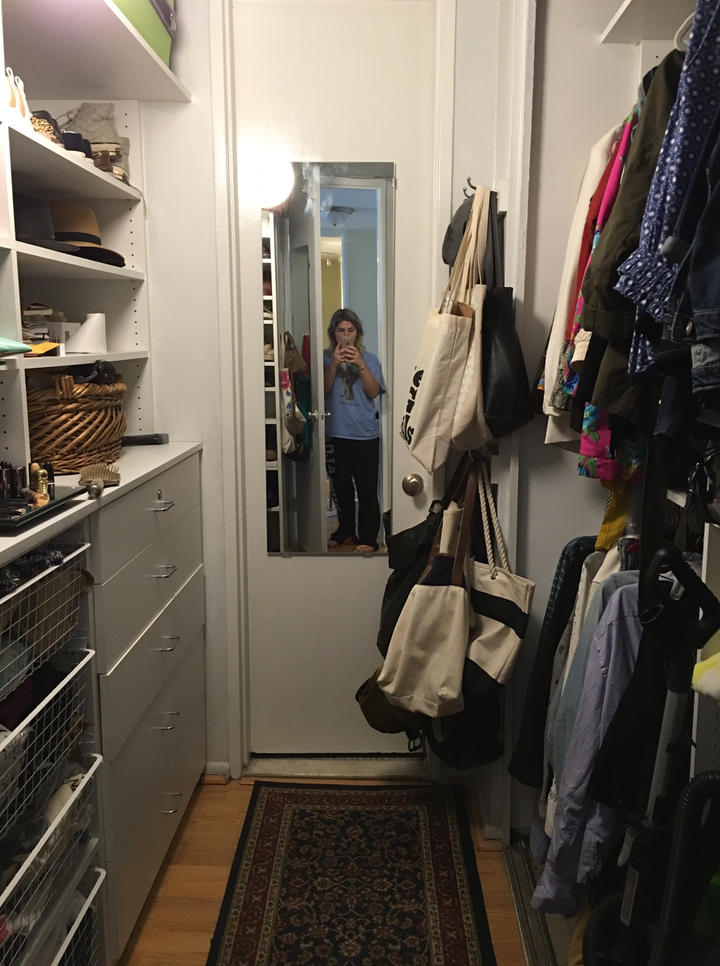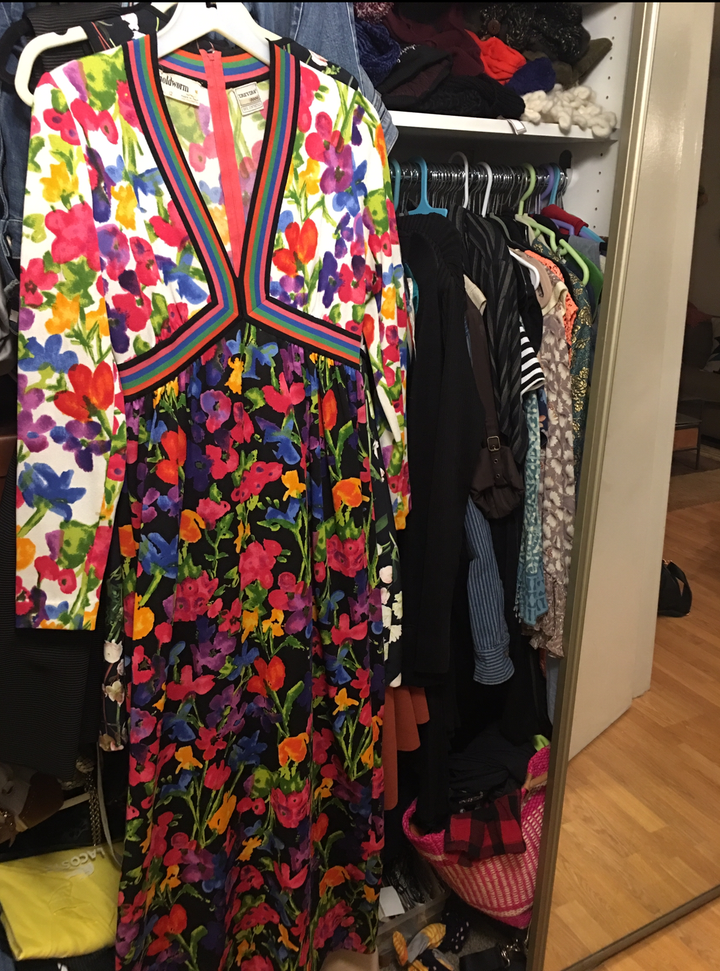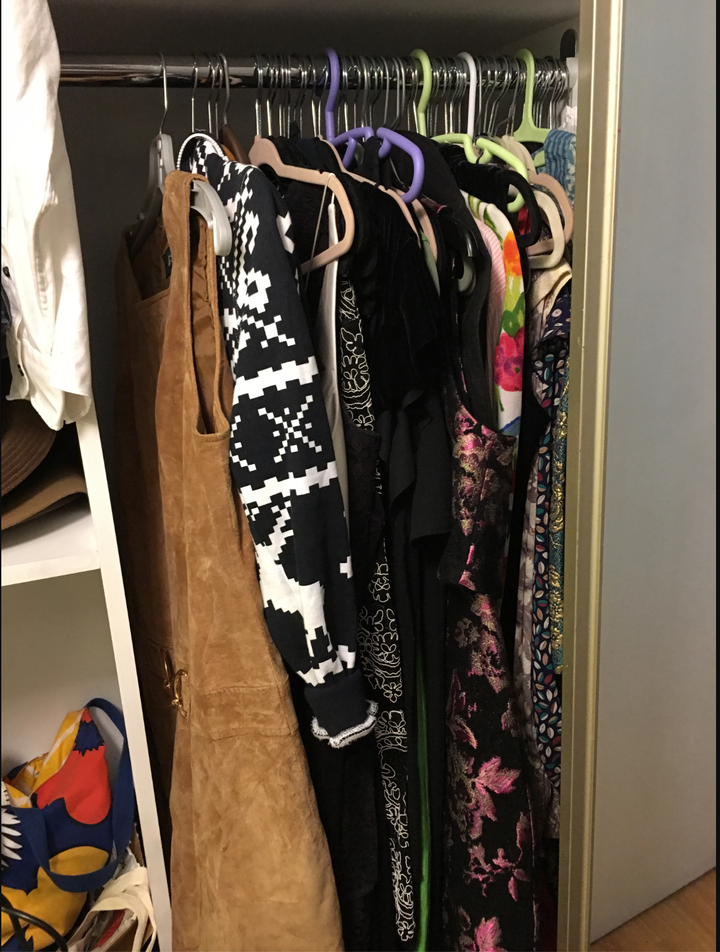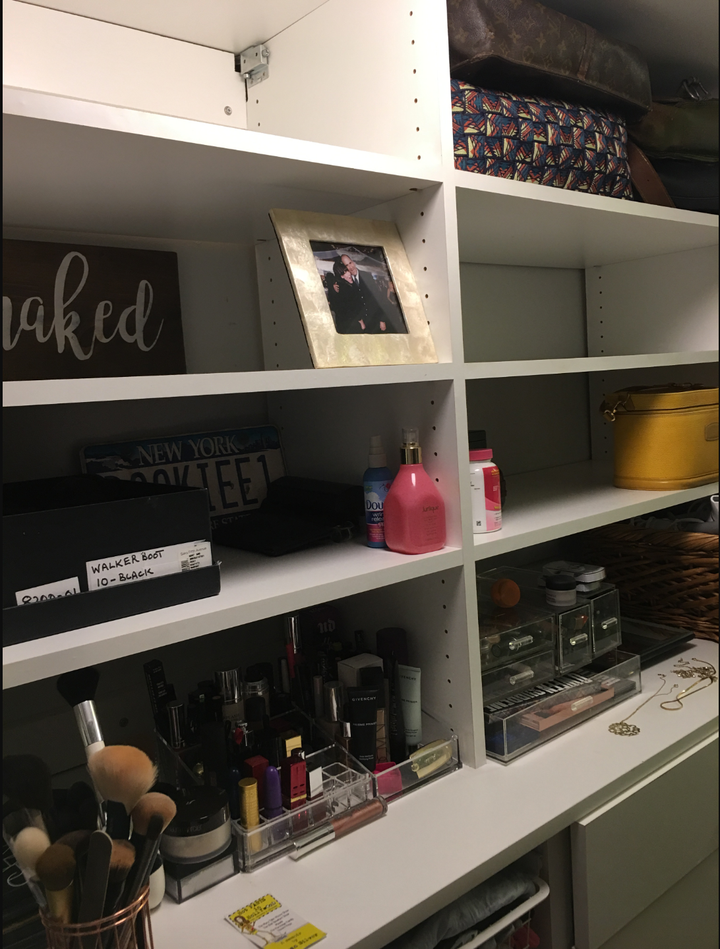
As my mother and nana tell it, the first word I ever read was Macy’s. I was just shy of 2 and read it off of someone’s shopping bag at a mall in New Jersey, where we spent most winter Saturdays in my childhood. My grandma on my dad’s side operated a clothing store out of her home in Brooklyn for years. My parents were set up by those two grandmothers after they kept bumping into each other at ― you guessed it ― the wholesale clothing store they both shopped in seasonally. One grandma was shopping for her store, the other was shopping (likely just as abundantly) for herself.
I guess you could say that shopping, clothing, and collecting stuff is in my blood. In many ways, it’s the glue that bonds the three women in my family together. The joy of shopping is something we, three people from three generations with different understandings of the world, can agree on. My mom taught me how to spot a good sale, my nana taught me how to dress. I’ve brought her to a fashion show, I’ve let her dress me in the name of journalism, but most importantly I’ve always associated the mere act of shopping as happy, soothing and positive.
My home, a decent yet still New York City-sized studio, is a reflection of the way I’ve been raised. When I walked into what’s now my apartment for the first time, I put in an offer based on the closet alone: a holy walk-through with built-in storage installed by the previous owner. I already had a lot of stuff, and this was the first apartment I’d seen that seemed to both be within my budget and able to fit everything I’d acquired.
That was five years ago, when I had less credit card debt, about 100 percent fewer tote bags I never use, and considerably less closet-crowding than I have now. When I looked around at the closet that once felt like a dream and now reminded me more of a nightmare, I realized something needed to change.
Marie Kondo has been on my radar since 2014, when everyone and their mother started reading her bestselling book and figuring out if their possessions brought them joy. I tried to figure it out myself, years ago, and quickly found reasons that everything ― including socks with no mate (“they’ll come up in the next load of laundry!”) brought me so-called joy in some way. I promptly abandoned the project of tidying up.
Four years after her first book’s release, Kondo’s new Netflix show, “Tidying Up With Marie Kondo,” brings the magic of her tidying up principles to life ― pushing the agenda that clutter and mess lead to stress, and a minimalistic approach ultimately can lead to a more joyful and fulfilled life. Research shows the link between mess and stress, as well as the health benefits of having a tidy home. A 2010 study found that women who had cluttered homes “expressed higher levels of the stress hormone cortisol,” than those who didn’t, according to Psychology Today.
The Netflix series follows Kondo to various homes in various states of mess. She imparts her wisdom, folding principles and soothing demeanor on couples and families in hopes of bringing more joy to their lives. In one episode, a couple learns to appreciate each other without clutter getting in the way. In another, a pair of empty-nesters learn how to make their home “theirs” again.
Perhaps my rekindled urge to purge has to do not only with the show being a delight on the senses, but also a commitment I’ve recently made to make my apartment more of a place I want to spend time in. It seems obvious, but as a messy person with anxiety, it took the help of a therapist to realize how stressful coming home to a place in disarray truly is. (I know I’ve evolved because I asked for a vacuum cleaner for the holidays this year.)
But the cluttered closet, which became my first thought in the morning (I have to walk through it to get to the bathroom) and my last thought at night, had long weighed on me like the pile of dry cleaning stuffed into one of the shelves.

Because my first attempt at the Kon-Mari method didn’t stick, I asked a friend to help me sift through the stress stuff ― something I highly recommend to anyone starting on this journey without the assistance of Kondo herself. Ideally, it will be someone who lives more minimally than you and who is not as attached to the coverup you wore at Bonnaroo 2009 as you are.
We did not exactly seek joy out of each piece as we made our way through the closet. Instead, we developed our own criteria, where my friend asked me of every item: “Does this make you feel good? Do you feel sexy wearing this?” Many times, the answer was no. I felt pangs of guilt as I said “no” to dresses my grandmother had purchased for me, T-shirts my mother had brought me from various travels around the country (if you’re reading this, sorry Mom) and things I spent good money on that I thought I would love forever but in reality stopped wearing a long time ago.
In the end, I axed about 70 percent of my wardrobe, shoes included. Don’t get me wrong. Me saying “I have no clothes” is like your friend with hair down to her butt getting a trim and lamenting that she has no hair. However, I can claim one entirely empty dresser and several newly sparse shelves. I can see everything in my closet. There’s a nice surplus of hangers that now sit on a top shelf just in case, and I uncovered a favorite bra I thought was lost and gone forever nestled safely at the top of the underwear drawer.

My first instinct after emptying the closet was, of course, to fill it again. What was I going to do with all that space? But the thought dissipated when I realized how calm and serene the less-crowded closet has made me. I find myself just standing in there sometimes ― like a less-anxious weirdo.
Tidying up didn’t just give me more literal space, but something deeper. I have always used clothing and shopping as a distraction, a way to fill a void and feel self-sufficient. There’s a part of me that feels like I filled up every nook and cranny to convince myself that only I could fit here ― that there was no space for another person, with all their literal and figurative stuff. Now I’m starting to think I might be able to share.

In 2019, I’ll be spending more time in my tidy, sparse(r) apartment, and, in an effort to keep up this joyous momentum, have vowed to take a break from shopping and a commitment to buying only vintage when I do shop. Not only is the stuff better, it’s better on the wallet, and the environment. And that, well, brings me joy.
I highly recommend the practice for you, too. Just don’t forget about that friend ― and maybe try to forget about Bonnaroo.
